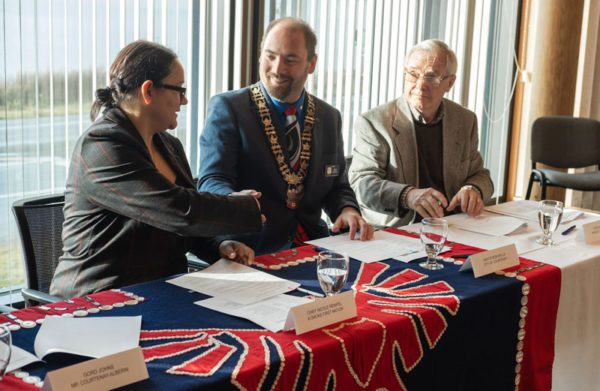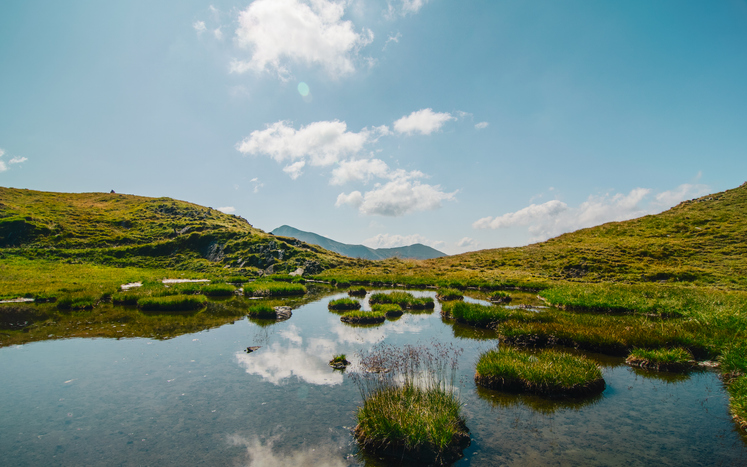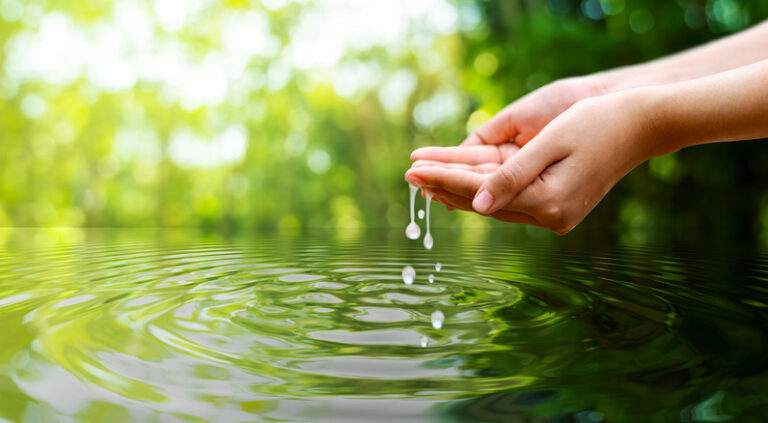A First Nation, municipality, and environmental non-profit have signed a Memorandum of Understanding (MOU) to collaboratively purchase, restore, and manage a key property in the heart of their community.
The three signatories, the K’ómoks First Nation, the City of Courtenay, and Comox Valley Project Watershed Society are working together with Interfor Corporation, the current owners of the property, to acquire and restore a former sawmill site to natural habitat. The site has been renamed Kus-kus-sum.
“K’omoks First Nation believes in partnerships, particularly when partnerships involve like-minded groups that share similar vision. It is in this spirit that we are happy to sign this collaborative agreement with the City of Courtenay and Project Watershed on behalf of our membership for the management and restoration of Kus-kus-sum,” said Chief Nicole Rempel, K’ómoks First Nation.
Participation in this project was undertaken without prejudice to any specific claim the K’omoks First Nation may file in relation to this site.
Since 2006, Kus-kus-sum has remained an 8.3-acre vacant cement lot along a critical salmon migration corridor in the heart of the Comox Valley. As part of the Kómoks Estuary, the restored area at Kus-kus-sum will provide fish and wildlife habitat, help mitigate climate change, buffer against sea level rise, attenuate localized flooding, become a culturally significant landmark, and provide educational and recreational opportunities.

“Being stewards of the lands and waters, it is inherently our duty to restore and assist in the rehabilitation of the natural habitat of the salmon and various marine and wildlife in this area,” said Chief Rempel. “It is our hope for the future that our skilled Guardian Watchmen participate in the restoration and maintenance of the site for our future generations.”
The restored habitat will be particularly beneficial for young salmon, which require a place to escape high river flows, predation by seals, and holding areas to allow for forage, growth, and acclimatization to increasing salinities before their marine migration.
Although non-binding, this initial agreement formalizes the partnership between the three parties in relation to Kus-kus-sum and outlines the issues that need to be addressed in further documents. It sets October 20th, 2019, as the date for entering a binding agreement that will detail the nuances of purchasing, restoring, and managing the property collaboratively.
“Working collaboratively with Project Watershed and K’omoks First Nation has been an essential component of this project, and as we move forward through the formal agreement process we look forward to building on this strong relationship with our project partners,” said David Allen, Courtenay’s chief administrative officer.
The MOU states that the City of Courtenay and K’ómoks First Nation will be co-owners of the land once it has been purchased and identifies Project Watershed as the lead in carrying out the restoration and fundraising campaign. The cost of purchasing and restoring the site has been estimated at $6.5 million.
“This project has been met with widespread community support,” said Paul Horgen, chair of Project Watershed. “Our community fundraising target was set at $500,000 and we are already more than halfway there.” To date, the organization has raised $277,000 from the community and almost 1 million in total from foundations and government agencies.
For more information on the project visit www.kuskussum.ca.









